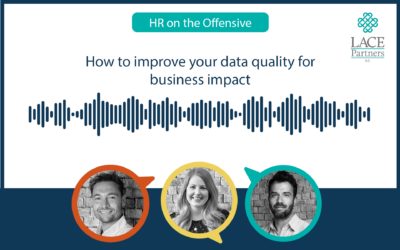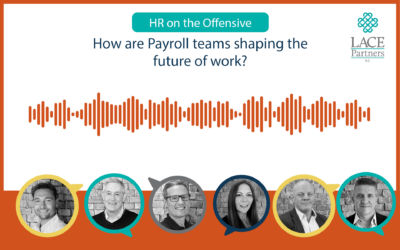Raj Sundarason, author of ‘The DAP Strategy’, recently spoke to Chris from LACE Partners on the HR on the Offensive podcast about his latest book, which makes some bold predictions about the digital adoption market between now and 2027. Today’s blog looks at some of the key discussion points, as well as what some of the biggest predictions are in the digital adoption platform (DAP) space.
What inspired you to write the book?
There were three reasons that compelled me to write the book. The first was reason that I was able to see the pressure and challenges work was putting on the employees. The second reason was because I saw multiple good examples of how digital adoption platforms supported organisations by helping their users simplify their daily tasks and impact them. I had the problem and the solution; next it was to bring it all together with my third reason, getting outside of my comfort zone and writing a book. The idea sounded good at the time but when I’m confronted with a challenge I don’t typically walk away. I’m pleased how these three reasons came together in this passion project of mine.
Can you expand on your thought that DAPs by themselves are not enough?
Firstly, not all digital adoption platforms are created equal so it’s important to consider what problem you are trying to solve. Ultimately you need different “ingredients”, like the data and the insights, to leverage the platform. If you don’t have brave leadership that’s willing look at the insights and confront what it presents you with you don’t have a chance. It’s crucial that there’s brave leadership who are prepared to pivot from the direction which they’re heading based on data.
There are a lot of organisations that think now they have bought the software; the software will be the solution to the problem. That is not the answer. Organisations are in these predicaments because they treat the software as the answer rather than it being an enabler to the solution to the problem. Internal capability – You need to have internal capability to leverage the insights, leverage the analytics and then begin to build intervention events and experiences.
Lastly you need a value framework and to understand what you are trying to solve. Most people don’t understand what that strategic corporate objective is that they started off with, and then what financial and operational levers they were trying to impact. This leads to a benefits case to buy technology and instead of finding solutions to the problem they focus on fixing the technology. This is where that value framework can guide you through that piece.
It’s important to have the right digital platform for your business. Additionally, having leadership that is brave enough to deal with confronting insights and be able to pivot. Furthermore, you need internal capability so you can build experiences that will redirect the trajectory in which you are going, and then making sure you are building it in the value framework. Hopefully this gives you an idea of why I say it’s just not the platform.
Do you think the pandemic has accelerated some of the predictions you made in your book?
It has, but it has also put a spotlight on how challenging and complex work was internally, for a lot of organisations and a lot of people. ‘The Great Resignation’ that is happening in America has shown that people are struggling with the complexity of work. When we look at digital adoption platforms people are trying to solve a 21st century problem with a 20th century mindset. My predictions for 2025 are “A digital adoption strategy becomes a core talent acquisition strategy. Digital employee experience becomes a top five question on a candidate’s decision criteria on whether to join the organisation. Companies that do not have a legitimate answer will not merely struggle with first aid churn of new hires but will struggle to attract the right talent and skills because people will simply not want to come to work and put up with the complexity of work.” I think that this has resonated with a lot of people and has reinforced why I wrote the book.
What is your overview for 2028?
I believe that in 2028 technology becomes advanced enough to understand where the friction points are and can recommend intervention events. In addition, process discovery and how it is leveraged becomes mainstream and that in turn will change the face of what we’re trying to do. In most cases we have done a brilliant job with customer experience. We focus all our energy on the customer experience meaning we haven’t spent enough time on employee experience, this leads me to believe that in the next two to three years will be focused on just that.
If you would like to reach out to Raj direct about his book you can connect with him via LinkedIn. If you would like to talk about your own digital adoption plans and how you can embed them as part of your HR tech roadmap, reach out to us here.






